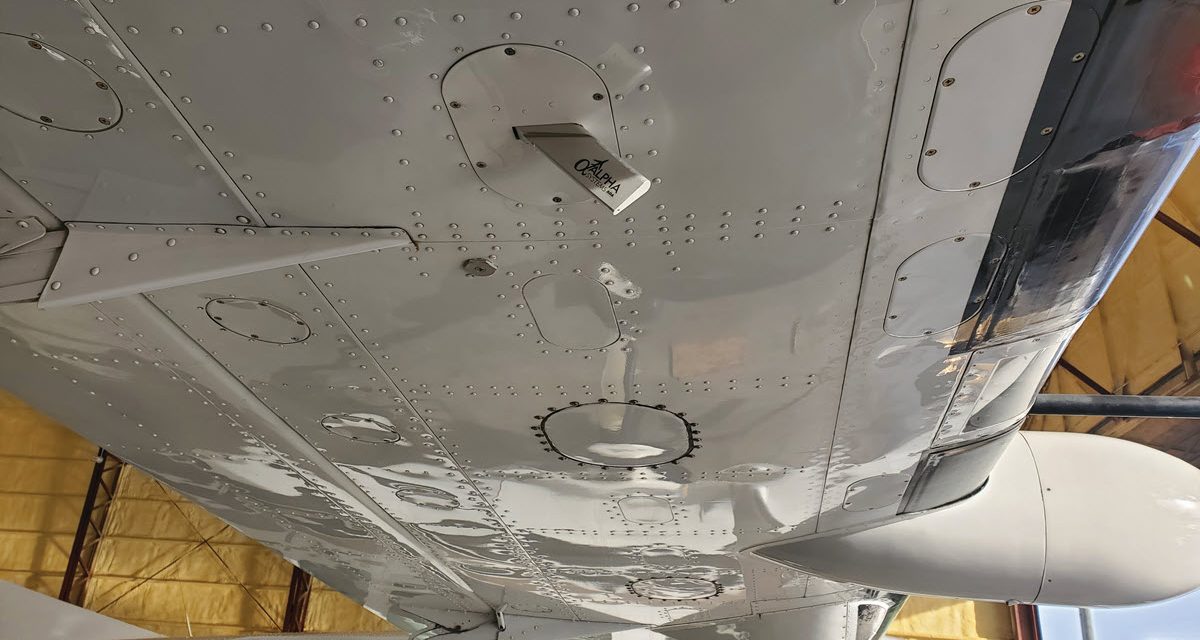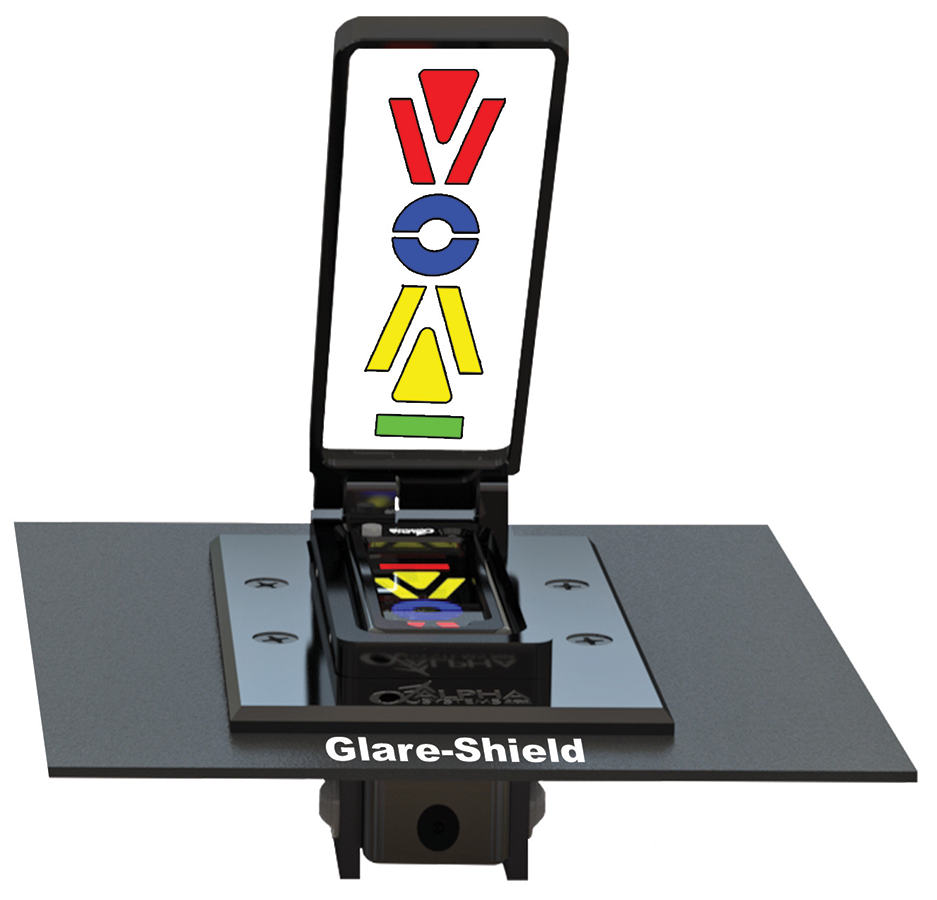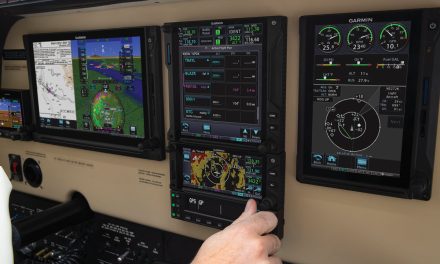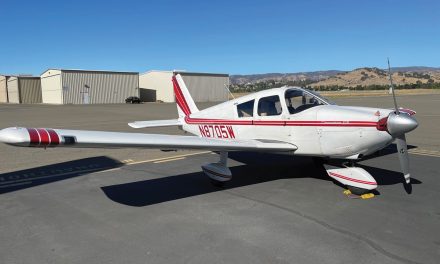The FAA issued a SAIB (Special Airworthiness Information Bulletin) at the end of 2024, strongly encouraging aircraft owners to consider adding angle of attack (AOA) technology, to their panels. They went a step further by suggesting that aircraft manufacturers start adding AOA capability to the new aircraft they build and sell. AOA may be catching on in the GA community but if you think that monitoring angle of attack is a relatively new concept, consider this quote:
“At this very moment, thousands of men, trying to learn to fly, are wasting tens of thousands of flight hours simply because they really don’t understand how an airplane flies; because they don’t see the one fact that explains just about every single thing they are doing; because they lack the one key that with one click unlocks most of the secrets of the art of flying. In the textbooks, this is discussed under the name of Angle of Attack. The story of Angle of Attack is, in a way, the theory of flight.”
—Excerpted from Wolfgang Langewiesche’s book: Stick and Rudder, 1944.
When I last spoke of AOA, I commented that when I learned to fly in 1972, the subject of angle of attack was never mentioned in my flight training – I suggested that it’s not likely getting much discussion in training cockpits today. I hope I am wrong but without AOA equipment in the aircraft, there isn’t much to talk about. The FAA wants this to change. So, prompted by the FAA’s push for AOA, let’s discuss the principles behind it and visit the options available to add AOA to your panel.
Aerodynamics and Angle of Attack
In aerodynamics, angle of attack specifies the angle between the chord line of the wing of a fixed-wing aircraft and the vector representing the aircraft’s relative motion. The lift coefficient of a fixed-wing varies with the angle of attack. Simply stated, increasing the angle of attack increases lift up to a certain point and, like all things, you eventually reach a point of diminishing returns, the maximum lift coefficient.
As we all know, this can happen very quickly in an airplane and the results can be unnerving or worse. This is known as the “critical angle of attack” (or “stall angle of attack”). Below this critical angle, lift increases. Conversely, above it, airflow over the wing is disturbed. The smooth airflow over the wing begins to separate from the upper surface and lift dissipates. You would think your airspeed indicator and stall warning indicator are all you’d need to avoid this situation, but the facts speak otherwise.
The FAA, in the SAIB, mentions the Colgan Air crash of a Bombardier DHC-8-400 in NY in 2009. In their report, they mention a number of failings on the part of the pilot and co-pilot that lead to the crash, including the inappropriate response to the activation of the stick shaker, failure to monitor airspeed, and failure to adhere to sterile cockpit procedures. They finally mention inadequate procedures for airspeed selection and management during approaches in “icing conditions.” At the time, I perceived the latter (icing) was the issue, along with pilot fatigue. The pilots were exhausted!
Interesting fact here. The stick shaker in the Dash-8 has a setting for flying into known icing that triggers it to activate 18 knots sooner than in normal conditions. The first officer, who sadly made just $16,000 in her last year in the right seat, set it up for normal conditions. I checked. AOA technology was not available in the Dash-8 in 2009. The stick shaker, pretty much the equivalent of our stall warning in GA, was it.
We have learned over the years that there is rarely just one reason an aircraft crash occurs. It is usually a series of factors. I remember the 1964 movie, “Fate is the Hunter,” that shows a fatal crash and the post-crash investigation. I was likely a fledgling pilot when I saw that movie some years later and it left an impression!
In researching my last article on AOA, I discovered that one in five accidents in Mooney aircraft are related to R-LOC or loss of control on the runway. It seems that the slick wing we find in the Mooney can be a handful, especially when landing with a little extra airspeed. We were taught to add a margin to our landing speed when approaching in windy conditions – not an issue in my Piper Colt, my first aircraft with that fat, Hershey Bar wing. But the Mooney’s wing wants to float. We know the risks of pushing the nose forward in those situations and what can happen when you land on the nosewheel. Frankly, even the Cessnas can be an issue in this environment. It is not that unusual to find a damaged or repaired firewall in a 182 at prepurchase inspection time, as a result of landing on the nosewheel. The same approach flown in a Mooney or Cessna (or Piper!) with an AOA or Lift Reserve Indicator can safely be flown at a lower approach speed and therefore minimize this.
Consider this: a stall can happen at any airspeed. So much for the airspeed indicator; the stall speed of an aircraft is a moving target! The stall speed of a lightly loaded aircraft with only the pilot aboard changes at full gross weight, yet a stall always occurs at the same exact angle of attack. Stall warnings actually tell you late in the process – sometimes too late. Fact is, a properly installed and calibrated AOA or lift reserve indicator shows you a direct measurement of your available “lift” when you need to know it. Simply stated, that’s better!
AOA/Lift Reserve Options
AOA technology has been around for many years and some of that technology is no longer used. Until a few years ago, we saw two primary approaches to measuring AOA: the pivoting vane and differential pressure. Both systems require a probe or vane of some kind, professional installation, and calibration. Recently, we have added probeless AOA options that are both very economical and do not require calibration which adds to the installation expense. Let’s take a look at your options if you plan to add AOA to your aircraft, starting with the pivoting vane.
Pivoting Vane
The concept is simple: The moving vane rides the relative wind and constantly “reports” its position in relation to the cord line of the wing. An indicator in the cockpit interprets the information and relays this to the pilot. EM Aviation is the only pivoting vane option for GA that I can see.
Sport Air USA/EM Aviation RiteAngle ™ Integrity AOA System at $1,675
Originally designed by EM Aviation, Sport Air USA (sportair.aero) is now supplying the AOA vane system, with an FAA-approved option with their RiteAngle “Integrity” AOA System for $1,675. If you think a vane system is best for you, Sport Air USA/ EM Aviation appears to be your only option. Sold by Aircraft Spruce.
Differential Pressure (DP)
This is the more common approach to AOA/reserve lift that we see today. AOA/lift reserve systems that operate this way use a single probe, mounted in clean air – typically under the wing on single-engine aircraft or on the nose of a twin.
The probe has two ports and measures differential pressure. It then reports it to the IM (interface module) and to the indicator. The DP approach requires plastic pressure lines to be run between the probe and the processor. A number of manufacturers are now offering DP AOA/Lift Reserve systems for installation in certified aircraft.
Alpha Systems AOA starting at $2,550
Alpha Systems (www.alphasystemsAOA.com) offers DP AOA systems for certified aircraft. They have a system for non-pressurized and pressurized aircraft and a wide variety of display options including a heads-up display (HUD) option. In fact, Alpha Systems has played a significant role in developing display options for AOA. An optional heated probe is also available. Their AOA systems start at $2,550 with three display options and they have a system for two-pilot applications. Alpha sells direct, so you can order from their website.
Garmin GI-260 Angle of Attack at $1,595
Garmin’s GI-260 AOA system (www.garmin.com/en-US/p/149850) uses their GSU-25 Air Data Computer (also used with their G3X EFIS system) and a DP probe like the other systems above. The standard GI-260 system is $1,595 ($1,695 with heated probe). One display is available with different mounting options. Sold only through Garmin dealers.
Have a website login already? Log in and start reading now.
Never created a website login before? Find your Customer Number (it’s on your mailing label) and register here.
JOIN HERE
Still have questions? Contact us here.








